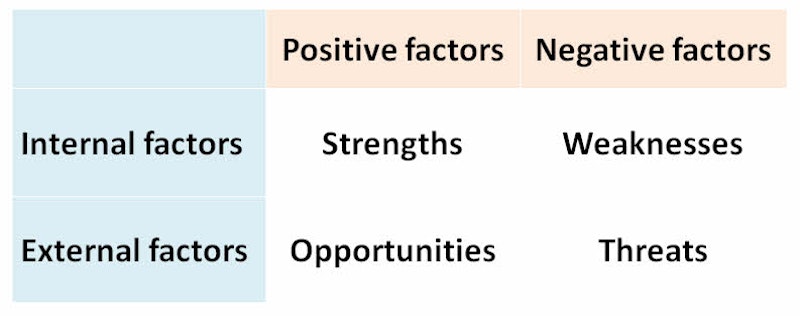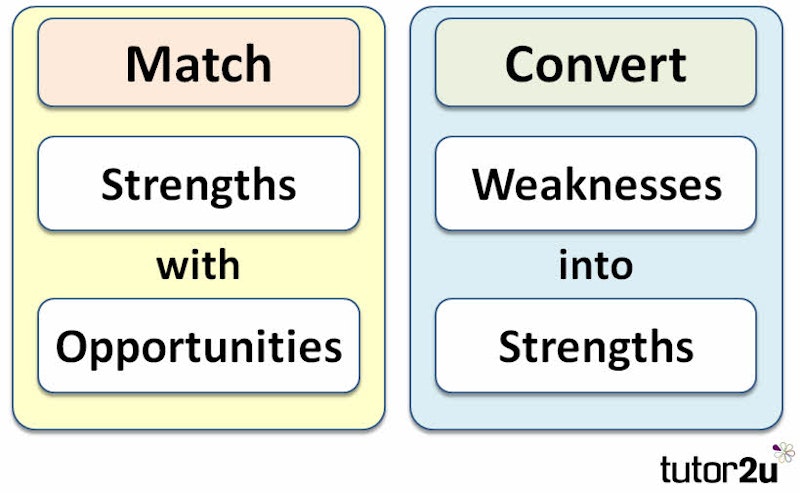Study Notes
SWOT Analysis
- Level:
- GCSE, AS, A-Level
- Board:
- AQA, Edexcel, OCR, IB
Last updated 22 Mar 2021
SWOT analysis is a method for analysing a business, its resources and its environment. It focuses on the internal strengths and weaknesses of a business (compared with competitors) and the key external opportunities and threats for the business.
SWOT is commonly used as part of strategic planning and looks at:
- Internal strengths
- Internal weaknesses
- Opportunities in the external environment
- Threats in the external environment
SWOT analysis aims to discover:
- What the business does better than the competition
- What competitors do better
- Whether it is making the most of the opportunities available
- How a business should respond to changes in its external environment
The result of the analysis is a matrix of positive and negative factors for management to address:

The key point to remember about SWOT is that:
Strengths and weaknesses
- Are internal to the business
- Relate to the present situation
Opportunities and threats
- Are external to the business
- Relate to changes in the environment which will impact the business
Using SWOT analysis
There is no point producing a SWOT analysis unless it is actioned! SWOT analysis should be more than a list - it is an analytical technique to support strategic decisions
Strategy should be devised around strengths and opportunities
The key words are match and convert:

A key challenge for any business is to convert weaknesses into strengths. For example:
Don’t forget that for every perceived threat, the same change presents an opportunity for business.
You might also like
Strategic Planning (Overview)
Topic Videos
What is Strategy?
Study Notes
Making motorway services pay
3rd April 2018
Business Models & Theories "In Your Pocket" Activity
Quizzes & Activities
M&S Food - a model strategic move into online delivery?
29th April 2017
SWOTting Staycations
21st December 2016
SWOT Analysis
Topic Videos